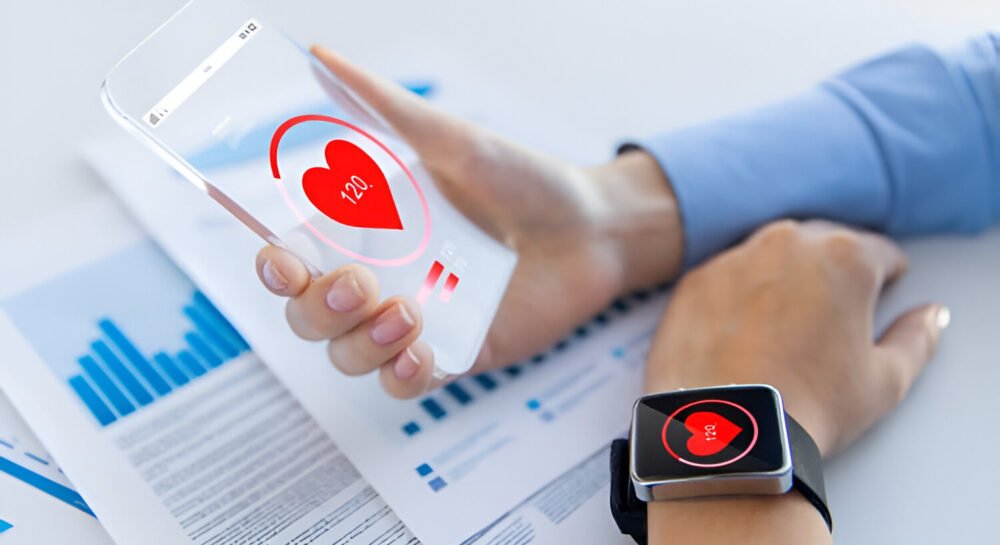In an increasingly digital world, combining technology with health has created a new world of health and wellness. Whether it’s tracking fitness through a wearable device (heart rate, sleep, activity, blood oxygen), or receiving care through telehealth technology or engaging with an AI health app or smart entertainment hub, technology comes alongside us in enhancing both our physical and mental wellness. Living in a “tech-savvy way,” is no longer limited to efficiency or play; it represents a whole new approach to thinking about our own health.
1. Wearable Technology and Real-Time Tracking
Engaging with wearable technology is one of the most tangible aspects of a tech-savvy approach to health management. Things like a smartwatch or fitness tracker can measure heart rate, sleep quality, physical activity levels, and in some cases, blood oxygen levels. These devices provide instant feedback so that users can make immediate changes to their lifestyle.
For example, a user can be instantly notified of unusual heart rhythms, and take immediate action to determine if a medical change is warranted, possibly preserving their health. Similarly, tracking sleep hygiene would provide information for patterns of not sleeping, or restlessness; allowing the user to consider remedies or seek professional help.
Benefits:
- Visibility to detect potential health problems early
- Increased awareness of daily habits
- Encouragement to keep engaging in regular physical activity
2. Telehealth and Long-distance Healthcare
Tech-enabled living has changed the way individuals interact with their healthcare. Telehealth, which we once thought was a concept for the future, is now common practice. Individuals can get the consultation from a healthcare provider from their smartphone or computer in their living room of home.
This is a significant development in healthcare for individuals with mobility issues, individuals with chronic diseases, and for individuals that live in rural areas with health-care resources that are limited. Telehealth has reduced the time and cost associated with travelling to and waiting in a waiting room. It increases opportunities for the individual to engage in healthcare, which in many cases leads to better health outcomes through more frequent interactions with their health professionals.
Benefits:
- Increased access to healthcare professionals
- Timely consultations that can lead to early interventions on healthcare services
- Convenience and cost savings.
3. Smart Home Devices for Health and Wellbeing
Smart home technology has also extended into the world of personal health and wellbeing. Smart thermostats, air purifiers and lighting can help to improve the environment of an individual’s home. Several smart air purifiers have air quality sensors that detect and filter allergens, dust, and/or pollutants; this is an important device for individuals with asthma or allergies.
There are also smart kitchen devices that encourage health eating by tracking nutrition or tracking meals that are full of balance. Simple smart devices like voice-activated assistants can help remind you to take your medications or help to guide you through a relaxation or mindfulness routine.
Utilization Beneficial Characteristics Will Enhance Their Lives:
- Improved, cleaner living spaces
- eating disorders
- Medication support
4. Health and Wellness Apps
Smartphone apps have become digital buddy’s in wellness journeys, whether tracking your calories, guided workouts, or mental health, health apps help deliver personalization and options to achieve your wellness goals!
Some apps use AI to provide you with a unique workout experience based on your mood tracking, user behaviors or to provide mental health exercises. Some apps use gamification to provide the personal satisfaction and rewards in healthy actions and physical activity, making it engaging.
Key Benefits:
- Unique & Customized to your and/or demographic needs
- Tracking of diet & exercise accountability
- Personal mental health support with mindfulness and therapy activities
5. Data-Driven Decision-Making
The greatest strength of tech-enabled health devices is their ability to gather and assess data. By Evaluating & collecting information from wearables, applications and other consultations, individuals will be able to see their health data and trends, arming the user with better decision-making capabilities and hopefully enhancing discussions with health providers.
Data visualization thinking is also a great tool & allows the user to better envision presented health data – which often consists of many complicated & interactive metrics based on how the user engages platform functionality. This sort of support can afford the user better insight to track their health progress or health areas of concern.
Benefits:
- Greater understanding of long-term patterns to inform health simply
- Better conversations with health providers
- Data-backed lifestyle changes
6. Mental Health Tech
Mental health used to have a stigma attached to it, but that is slowly changing thanks in part to mental health technology. Mental health apps now provide cognitive behavioral therapy (CBT), meditation sessions, mood tracking, and even online community support, which is incredibly time-effective because people can hanve access to it anywhere & anytime.
Also, the development of what is often termed ‘digital detox’ tools and screen time monitors, are helping people maintain as healthy a balance between online time and offline time as possible, which fosters better emotional well-being overall.
Benefits:
- Simpler access to mental health services
- Support for managing anxiety, depression, and stress
- Methods for healthier digital habits
Conclusion: A Smarter Way To Better Health
Being tech-savvy and living with technology is now less about owning the latest gadgets and more about using technology to promote a healthier, longer, and more informed life. Habit-living and thinking through technology can put you back in control of your health, help to prevent illness, treat chronic disease, and generally increase your quality of life.
That said, remember that technology is a supplement, not a replacement or substitute for real individual care and healthcare. When used appropriately, living with technology can provide a good foundation of prevention, empowerment, and convenience for working toward better healthcare outcomes.



